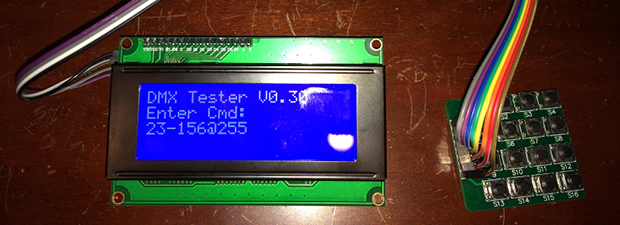
Despite being around for about as long as MIDI, DMX, the industry standard for controlling stage lighting and smoke machines, is still an astonishing expensive protocol to work with. Where MIDI can be banged out with a simple microcontroller – with odd bit rate requirements, no less, DMX testers cost hundreds of dollars. Of course this means the market is wide open for a DIY DMX tester, and over on the projects site [Tony] has just the thing.
For the hardware, [Tony] is using few 4×4 matrix keypads for user input, and a character LCD for the display. With this, he can set any of the 512 lighting channels in a DMX setup to any one of the 256 intensity values. Setting a range of channels to any intensity is a snap, with an extremely cut down command protocol. All the processing is handled by an Arduino, which seems more than capable of handling the DMX protocol thanks to the Conceptionetics DMX library.
While it’s not a full-blown lighting console you’d find in the back of a theatre, it’s more than sufficient to test a lighting rig. It also seems pretty simple to use, just the thing if you’re trying to wrap your brain around some theatrical lighting.















Reminds me of this page:
http://www.hoelscher-hi.de/hendrik/english/analyzer.htm
speaking from the industry, there are cheaper alternatives, but the higher priced ones are more in demand for 2 reasons.
Rental companies need the most reliable units they can get.
But most importantly, rental companies like the higher price. Higher price means higher rental fees, which means more profit.
If someone made a device with 60% of the functionality of Goddard’s DMXter and sold it for $300 – they wouldn’t be able to keep any in stock.
Yes, but WHICH 60%? The reason Goddard’s device has what it does is to appeal/be useful to the wide range of needs in the entertainment lighting industry,
If you add an actual UI I don’t even give a shit which 60% as long as it’s still generally useful.
There should be a kickstarter for a Bluetooth (BT LE?) DMX dongle + Android app at ~$50. No need for kludgy keyobards and small lcds, this is what smartphones are for.
expensive?
Just buy a ready-made FTDI cable USB to RS485 and wire the correct DMX XLR connector – the rest is just a little software controlling everything.